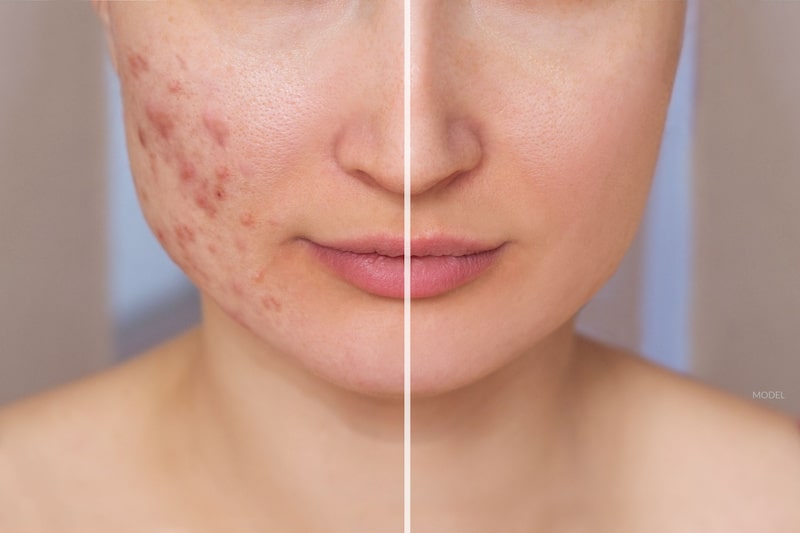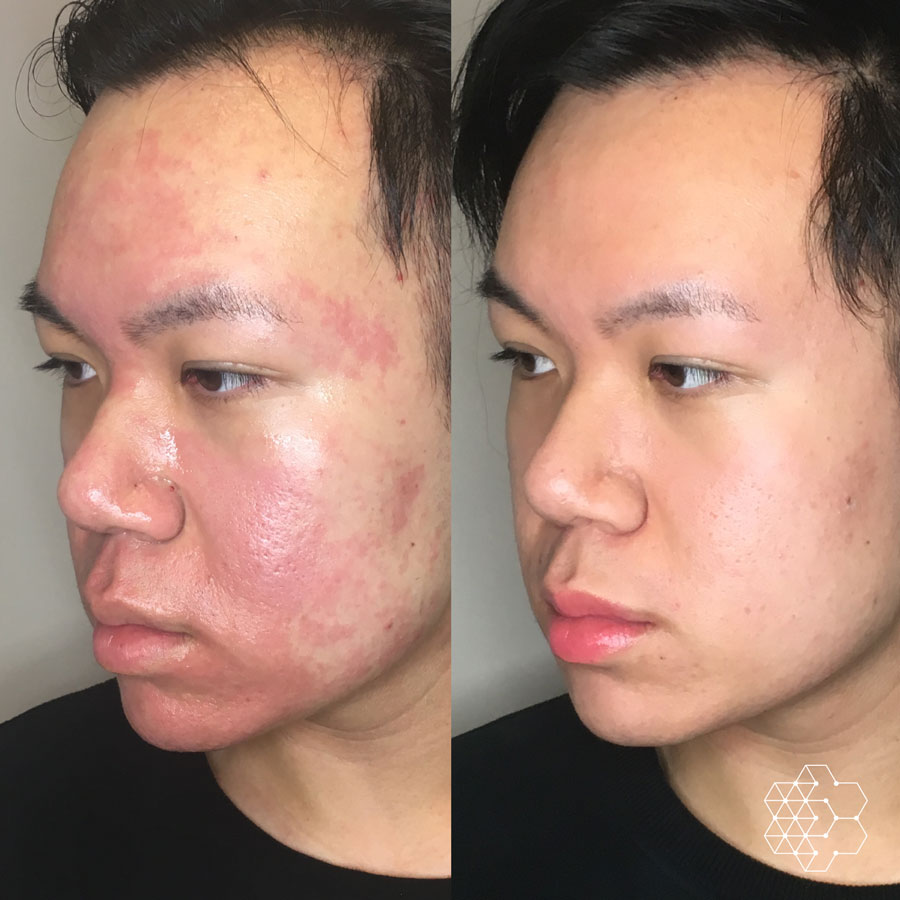Understanding the Different Skin Disease and Efficient Therapy Choices for Acne Scars
Acne marks stand for a complex interplay of skin conditions that considerably effect individuals' self-esteem and overall skin health. As we explore the landscape of acne scar management, it becomes evident that the trip toward more clear skin might include more than just topical solutions.
Sorts Of Acne Marks

On the other hand, hypertrophic marks result from an overflow of collagen during the recovery procedure, resulting in increased locations on the skin. These marks are typically firm and can differ in color, sometimes showing up red or darker than the surrounding skin.
Recognizing these kinds of acne marks is crucial for creating an effective therapy plan - acne scars. Alternatives might include chemical peels, laser therapy, microneedling, or dermal fillers, tailored to the specific scar type. A complete assessment with a dermatologist can aid identify the most proper treatment, considering the individual's skin type, scar seriousness, and total skin wellness
Reasons For Acne Scarring
Scarring occurs as a result of the body's natural healing reaction to inflammation and injury triggered by acne lesions. When acne types, it activates an inflammatory action, leading to the release of different cytokines and growth aspects that advertise recovery. Nonetheless, this procedure can occasionally lead to excessive tissue formation or insufficient fixing, resulting in scars.
The main reasons for acne scarring include the seriousness of the acne itself, duration of the lesions, and individual skin types. Severe inflammatory acne, such as cysts and nodules, is more probable to cause scarring as a result of much deeper tissue damage. Additionally, improper handling of acne sores, such as pressing or picking, can intensify tissue injury and inflammation, raising the likelihood of scarring.
Hereditary proneness additionally plays a significant role; individuals with a family background of scarring are at a greater threat. Skin kind and color can influence mark formation, as darker skin tones may experience post-inflammatory hyperpigmentation, while lighter skin might establish atrophic marks.
Eventually, understanding these reasons is necessary in handling acne and reducing the capacity for scarring.

Treatment Choices for Scarring
Reliable treatment options for acne scarring differ relying on the type and severity of the marks. Normally categorized right into atrophic, hypertrophic, and keloid marks, these conditions call for customized methods for optimal outcomes.
For atrophic scars, which are characterized by a loss of cells, treatments such as chemical peels, microdermabrasion, and laser therapy are generally utilized. These methods advertise skin renewal and stimulate collagen manufacturing, thus improving skin structure. Subcision, a minimally invasive procedure, can additionally work by separating fibrous bands under the skin.
Keloid and hypertrophic scars can be extra challenging to deal with. Choices consist of corticosteroid injections to lower inflammation and squash the scars. Sometimes, cryotherapy or laser treatment might be suggested to decrease their appearance.
Surgical alternatives are available for serious scarring, where excision or skin grafting may be essential. It's vital for individuals to talk to a skin specialist to evaluate their details scar kind and discuss one of the most ideal treatment strategy. Combining several treatments commonly yields the very best results, making sure that each client's one-of-a-kind skin condition is resolved successfully.
Natural Home Remedy and All-natural Solutions
All-natural services and natural remedy can give an easily accessible strategy for individuals seeking to enhance the look of acne marks (acne and acne scars treatment). Different active ingredients located in the home kitchen have demonstrated potential benefits in improving skin structure and advertising recovery

One more efficient choice is lemon juice, which works as an all-natural exfoliant and can lighten hyperpigmentation. It should be utilized very carefully, as it may create photosensitivity. Oatmeal masks are additionally useful; their mild exfoliation can aid eliminate dead skin cells while comforting inflammation.
Important oils, this content such as tea tree oil and lavender oil, can better support mark recovery because of their antimicrobial residential or commercial properties. It is critical to do a spot test before using any solution to ensure there are no adverse reactions. These all-natural solutions can be a complementary technique in the trip to decrease acne marks.
Protecting Against Future Scarring
Embracing a positive strategy to skincare can dramatically decrease the danger of creating future acne marks. One of the vital techniques is to take care of acne efficiently as it emerges. This involves using non-comedogenic skincare products and medicines suggested by skin doctors that target acne without irritating the skin. Regular cleansing, exfoliation, and hydration can assist preserve skin wellness and protect against clogged pores.
In addition, staying clear of the lure to press or choose acne sores is vital, as this can bring about swelling and succeeding scarring. Rather, people must concentrate on applying topical treatments that promote recovery and decrease swelling. Ingredients such as salicylic acid, benzoyl peroxide, and retinoids are understood for their efficiency in handling acne and decreasing marks.
Sunlight security is another essential component; direct exposure to UV rays can darken scars and restrain recovery. Making use of a broad-spectrum sunscreen daily can mitigate these results.
Last but not least, preserving a healthy diet regimen rich in anti-oxidants and remaining moisturized supports skin regrowth. By carrying out these safety nets, people can significantly decrease their danger of future scarring and advertise general skin health.
Verdict
To conclude, a thorough understanding of acne scars, incorporating both hypertrophic and atrophic types, is necessary for effective therapy strategies. Customized interventions, consisting of expert therapies and natural remedy, can significantly boost skin appearance and appearance. Preventive procedures also play a vital role in lessening future scarring. Consultation with a skin specialist continues to be necessary to devise individualized strategies that consider private skin kinds and i was reading this scar extent, inevitably improving the effectiveness of mark monitoring methods.
Acne scars represent a complex interplay her comment is here of skin conditions that dramatically impact individuals' self-esteem and overall skin health. The 2 key groups of acne marks are hypertrophic and atrophic scars. These scars are further classified right into 3 subtypes: ice choice scars, which are slim and deep; boxcar marks, which are larger and have well-defined edges; and rolling marks, which produce a wave-like appearance due to uneven skin appearance.
A comprehensive consultation with a dermatologist can aid establish the most proper intervention, taking right into account the person's skin type, scar extent, and total skin health and wellness.
Assessment with a dermatologist continues to be important to devise tailored techniques that think about private skin types and mark intensity, eventually enhancing the efficiency of mark administration techniques.